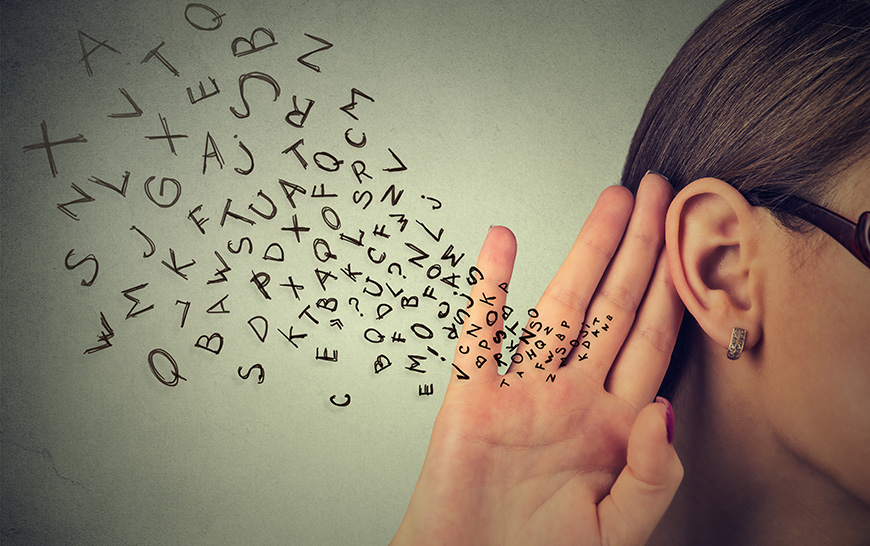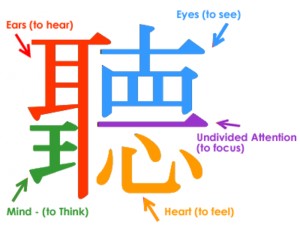If I were to ask you, “What part of the body do you use for listening?” most English speakers would emphatically shout ‘EARS’. Of course, that’s what gets drummed into us in our infancy. However, the Chinese symbol for listening embodies a far more complex and arguably more accurate reflection of what listening really involves.
Could it be true that we need all FIVE aspects of the symbol to truly listen?
Let’s take an example. Imagine a simple statement; ‘I’m fine’. Imagine it’s said with a smile, a calm, warm tone. What you can see, hear and feel is congruent – so they probably are fine. Imagine it’s said with a curt, loud tone. I’m FINE. The person’s body is tense, their face is pinched with pursed lips. You’d believe the exact opposite. Imagine the emphasis is on the ‘I’m’. I’M fine. You’d immediately question if there was someone else who’s not fine? The exact same words can convey multiple different meanings depending on what we can hear, see, feel and interpret. This echoes Albert Mehrabian’s finding that when we seek to understand and interpret another person, their body language and tone of voice are more significant than the words they speak. If the body language and voice match the words, then we listen to the words. If they don’t match, then we pay far more attention to body language and tone for meaning – we might even ignore the words. Clearly, we need at least 3 of the symbol’s aspects to listen: Ears – to hear the tone and words. Eyes – to see the body language and facial expressions. Heart – can we feel what they are saying and tap into our own empathy?But what about the Mind and Undivided Attention?
Let’s think about a concept from Stephen Covey in which ‘most people do not listen with the intent to understand; they listen with the intent to reply’. This means that whilst someone is still talking, we are busy formulating our response and readying ourselves to jump in with our own point. Or there’s mind chatter going on – a running commentary in our heads ranging from thoughts on what the other person is saying to what we might have for dinner. Both prohibit us from being truly focused on tuning into and absorbing what the other person is saying. Therefore, we absolutely DO need the last 2 aspects of: Mind – are we being objective or making assumptions? Undivided attention – being completely focused on the other person.But why bother improving our listening skills?
Think about the people in your life who are good listeners. How do you feel about them? You probably really like them or at the very least respect them. When we really listen to others it’s what Covey describes as giving someone ‘psychological air’. They are more likely to think highly of you without you trying too hard AND if they feel heard by you, they will more likely listen to and take on board your ideas afterwards.HOW do we listen bearing the 5 points from the Chinese symbol in mind?
Listening is HARD. Most of us like to think we’re good listeners but given the above definition – are we really? The truth is that listening is a state that we need to consciously ‘switch on’. It doesn’t come easily to us as humans. 3 quick tips to immediately listening better:- Actively DECIDE to listen to a person – you really must ACTIVATE listening mode.
- Dial down internal chatter in your head. Stay focused. If you notice your mind has started to wander – just bring the focus back to the person.
- Reflect what you’ve heard – it shows the other person you’re really listening.









0 Comments